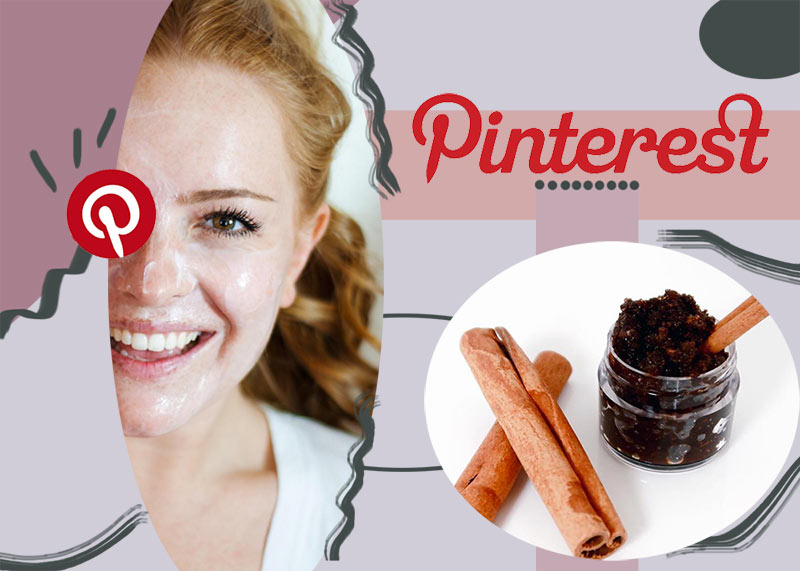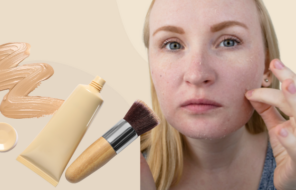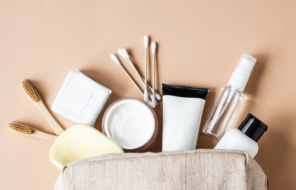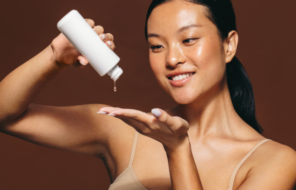If you cultivate a beauty Pinterest board, whether for beauty, wedding, or interior decor inspiration, you’ve probably also dug your way through a lot of bad Pinterest skin care hacks. It’s not always easy to tell which of these skin care tips will work, and which are bad skin care tips that will totally destroy your skin.
I am actually a massive fan of natural and DIY skin care tips – a honey mask is my go-to skin remedy when things get stressful. However, I also understand that skin care products are sometimes a complicated thing, and that in order to be effective a lot of care needs to be taken that everything is done correctly during packaging and formulation.
In this post, I’ll tell you about the worst offenders: the harmful ingredients that show up in those bad skin care tips on Pinterest and on various beauty blogs. I’ll also give alternative suggestions for each one of those bad skin care ingredients, that are safe and effective.
1. Baking Soda
Out of all of the bad skin hacks on this list, baking soda is by far the worst. This seemingly innocuous white powder can cause some serious damage to the skin in the long term.
At a 9 pH, baking soda is quite alkaline. Our skin, on the other hand, functions best around a 5 pH. When you apply baking soda to your skin, it damages the skin’s balance, and makes it much more susceptible to infection (including acne), dehydration, and irritation.
Sure, in the short term your skin might feel smooth from the grainy texture, but it is seriously not worth it in the long term.
Try instead: Literally anything, please! Since baking soda is often recommended for clearing blackheads and minimizing pores, the best alternative is kaolin clay, which has a pH of 6.
You can mix it with water and leave it on the skin for a few minutes, and it’ll pull all the nasties out of your pores. If you’re using it as a DIY exfoliator, finely milled sugar or salt are much safer bets.
2. Lemon Juice
Lemon juice is nearly as bad as baking soda, but in the opposite direction. At a pH of 2, it is simply too acidic for our skin.
Lemon juice is also seriously phototoxic, which means it can increase the chance of sunburn and sun damage by a large magnitude. This is ironic, since it is often recommended as a remedy for hyperpigmentation. Many of those who try this awful skin care hack will be disappointed if it ends up giving them even more discoloration!
Try instead: Hyperpigmentation treatment requires products that are more advanced than anything you can find in your kitchen. The most powerful naturally derived skin-brightening and regenerating ingredients are vitamin C, licorice root extract, niacinamide, alpha hydroxy acids, and retinol.

3. DIY Sunscreen
There are many DIY and natural skin care blogs that rave about this dangerous recipe. While the main ingredients you might see in it, zinc oxide and titanium dioxide, are real sunscreen ingredients, there is a lot more that goes into crafting an effective sunscreen than blending minerals into shea butter.
In a lab, a chemist can make sure that the sunscreen minerals are adequately dispersed into the formula so that the product can give even coverage and protection. In addition to that, after the sunscreen is created, an independent lab tests it to actually make sure that it has the predicted SPF, and that it can adequately protect from the sun.
At home, there is absolutely no way to ensure this, and the chances you will create something that will actually protect your skin are very minor. Unlike with many of these other skin care hacks, where the damage to your skin would be mostly surface, this one is the most dangerous, since inadequate sun protection can lead to more than just sunburn, it can also lead to skin cancer.
Try instead: A real, tested sunscreen is the way to go. You can still opt for a mineral sunscreen that is made strictly of natural ingredients, like Badger’s SPF 30 Zinc Oxide Sunscreen Cream (available at Walgreens).
4. Cinnamon
Cinnamon is undeniably delicious, and it does hold a host of health benefits – but applying it topically to the skin? The very thought makes me cringe.
This antioxidant-rich spice is often suggested for acne, due to antibacterial properties. I’ve also seen it suggested for anti-aging and skin plumping. It also has a warming (meaning irritating) effect, so it is sometimes suggested as a lip plumper.
Since it is a serious irritant, I would strongly caution to avoid using cinnamon anywhere on the face. Your acne is already inflamed, so why would you put something that will increase inflammation right on top of it?
You should never put on your skin anything that triggers inflammation, because it really is a response to damage. If your skin happens to be especially sensitive, you can even end up with permanent damage.
Try instead: For acne, you have a ton of options that won’t harm your skin! If you want to go the DIY route, there actually is a spice that is great for acne and does not cause irritation: turmeric! However, turmeric also has the tendency to turn everything it touches a bright yellow.
The best way to use it is to blend it into a mask with honey, and yogurt. When mixed into yogurt, the turmeric doesn’t leave behind any tint. Otherwise, a store-bought acne treatment with salicylic acid or benzoyl peroxide will likely work best.

5. Hydrogen Peroxide
I’ve seen hydrogen peroxide touted as a natural solution for acne, which is especially odd, because natural is not the first thing that pops to mind when I think of natural ingredients. It is also popular as a disinfectant for wounds.
While hydrogen peroxide is indeed a wonderful disinfectant, also a great means for bleaching arm hair, upper lip hair and whitening nails at home, I think it is best to avoid using it on the skin altogether. Bacteria can’t live in an oxygen-rich environment, but skin cells don’t thrive in it either.
Hydrogen peroxide causes serious oxidative stress that kills skin cells and can cause premature aging in the long term.
Try instead: Tea tree oil is a wonderful natural solution for the acne bacteria. At a 5% concentration, it is as effective as benzoyl peroxide, and is perfectly safe for the skin. You can buy pure tea tree oil and then dilute it either in water or a good skin care oil, like rosehip oil or argan oil.
6. DIY Serums & Creams
There are all kinds of recipes on the Internet for homemade moisturizes and serums, and while a few of them are quite safe, the vast majority would lead to a concoction filled with bacteria that could easily become mouldy. The reason for this is that the moment you mix oil with water, you end up creating an environment that is perfect for all kinds of nasties to grow.
In general, any skin care recipe that is not single-use and includes water or plant hydrosols should also mention a preservative. Before you ask, no, vitamin E or grapefruit seed extract are not enough!
Try instead: Water-free (and hydrosol-free, and extract-free) recipes do not need to be preserved. Things like body butters and balms can be made safely without a preservative, as long as the environment you prepare them in is sterile. Some oils do go rancid quicker than others, but vitamin E can be used to counter that.
The other option is to combine things moments before you use them. For example, a blend of vegetable glycerin, rosehip oil, and water would give you wonderful hydration with some anti-aging and skin-brightening properties to boot, and you could simply mix a few drops of each in your hand before applying.
Have you tried any of these bad skin care hacks from Pinterest? How did things turn out? Share your thoughts with us!





